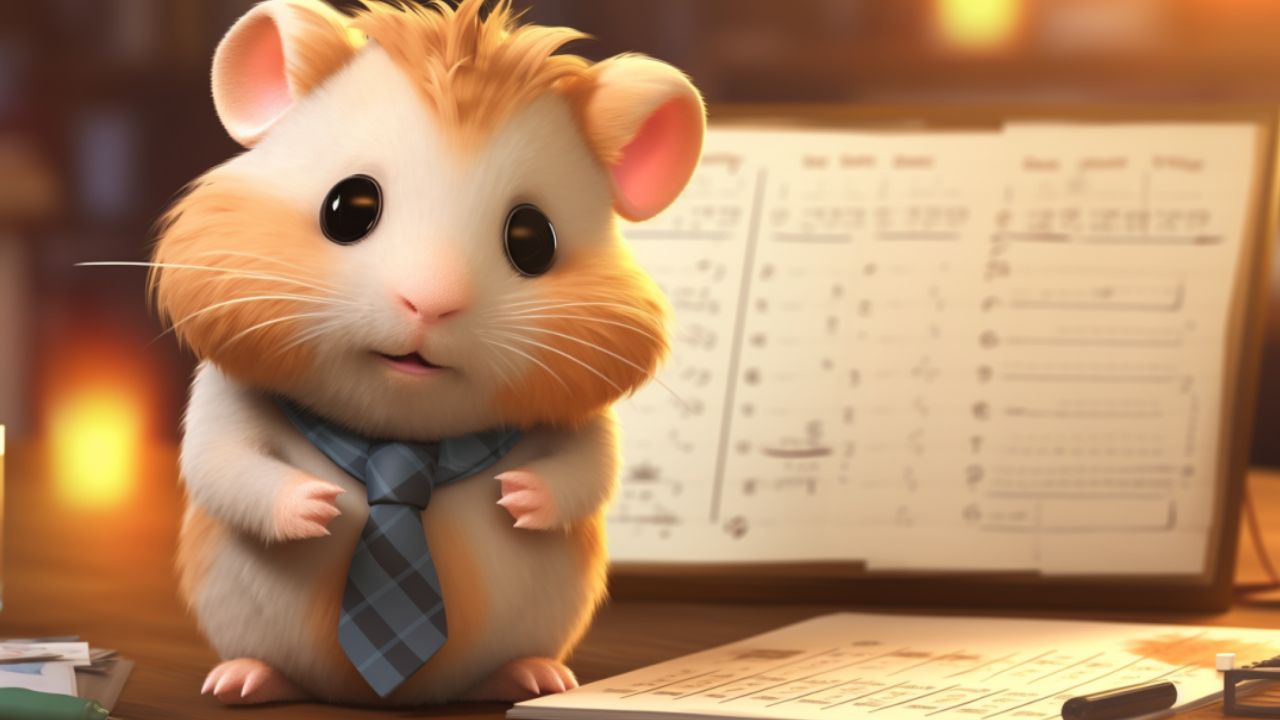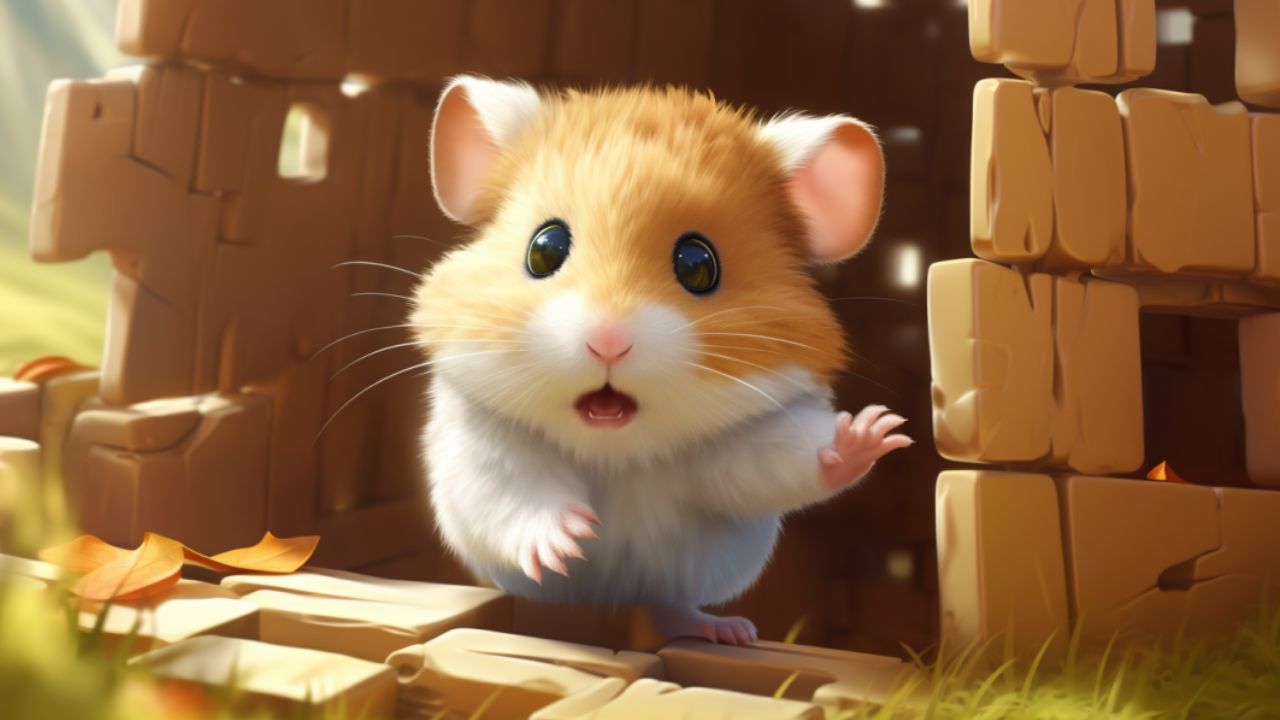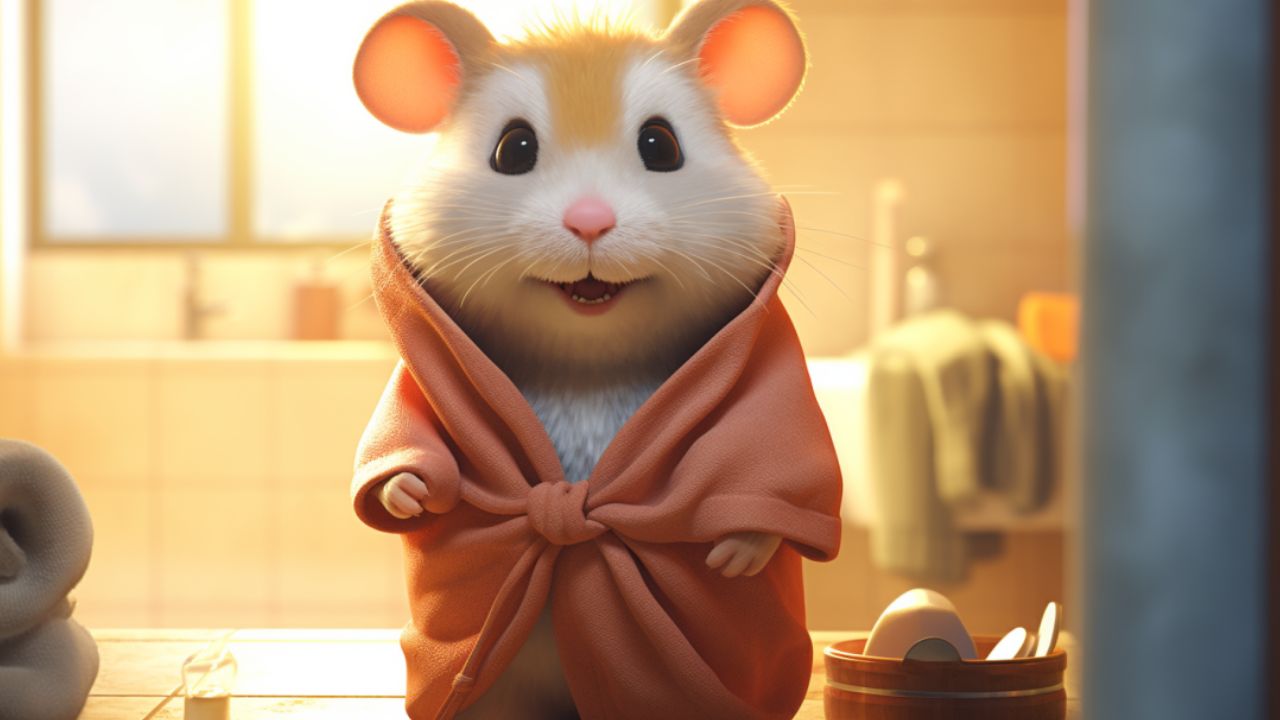Have you ever paused to marvel at the intricate, whimsical world of hamsters? These diminutive creatures, though small in stature, possess an expansive universe of behaviors, quirks, and instincts. A universe that often leaves their human counterparts scratching their heads in bemusement. In this SmartyPaws special, we’ll unravel the tapestry of hamster lore, revealing surprising facets and offering insights that could revolutionize your relationship with your whiskered companion.
Introducing the Curious and Mystifying Behaviors of Hamsters
Hamsters are nature’s secret agents, working in the shadows, busy with their own clandestine operations. Their behaviors might seem odd, even inexplicable to the untrained eye. From the fervent midnight wheel running to the methodical hoarding of treats, there’s always a method to their perceived madness. They aren’t just participating in random acts of hamster-hood; these behaviors are deeply rooted in their wild ancestry and survival instincts.
The Importance of Understanding These Behaviors
But why should one invest time in deciphering these behaviors? Well, understanding your hamster’s natural tendencies not only satiates your own curiosity but bridges the communication chasm between human and hamster. When you comprehend the why behind their do, it allows for a deeper bond, fostering trust and mutual respect. Plus, it elevates the caregiving experience, making it more rewarding and less of a guessing game. After all, in the words of SmartyPaws, knowledge isn’t just power; it’s also the key to paw-sitive bonding!
Hamster History: From Wild Plains to Living Rooms

In the bustling rhythm of today’s world, it’s often easy to forget that our tiny, furry companions have a rich history that stretches back to a time untouched by modernity. Before they became the darlings of our households, hamsters thrived in their natural habitats, mastering the art of survival. So, how did these creatures make such a dramatic leap from wild plains to our living rooms? Let’s embark on this historical adventure with SmartyPaws as our guide.
Tracing the Origins and Historical Significance of Hamsters
Hamsters, as we know them today, belong to a lineage that has been scurrying around our planet for millions of years. But it wasn’t until the 20th century that they started making appearances in households. The first hamsters were discovered in Syria, hence the name “Syrian hamster” for the most popular breed. These creatures were initially appreciated for their scientific significance. Zoologists were fascinated by their cheek pouches, nocturnal habits, and rapid reproduction cycle.
However, as humans got to observe these creatures more closely, their undeniable charm led them to become more than just subjects of study. They started being adopted as pets, their petite size making them ideal for households. Over time, various breeds were discovered and domesticated, each with its unique set of characteristics, but all equally endearing.
Insights into the Transformation from Wild Rodents to Beloved Pets
One might wonder, how did a creature of the wild become a domestic sensation? The transformation of hamsters from being wild creatures to household favorites is genuinely remarkable. Initially, hamsters were brought into the human realm for research purposes. Their ability to reproduce rapidly made them ideal candidates for genetic studies. But as they were bred in captivity, their gentle nature and intriguing behaviors won the hearts of their caregivers.
It wasn’t long before the commercial potential of hamsters as pets was recognized. Their manageable size, coupled with minimal maintenance requirements, made them perfect pets for both children and adults. Moreover, as urban spaces became more cramped, the need for small, low-maintenance pets increased, catapulting hamsters into the limelight.
Through selective breeding, we’ve seen the emergence of various hamster breeds, each with distinct colors, sizes, and temperaments. The wild hamster’s journey to becoming a cherished pet is a testament to the age-old bond between humans and animals. It’s a relationship founded on mutual curiosity, admiration, and the ever-present human desire to nurture.
The Hamster’s Secret Language: Behaviors and What They Mean

If you’ve ever spent time observing your hamster, you’d know that they’re not just mindlessly running on wheels or stuffing their cheek pouches. Every twitch, yawn, and stretch is a word in their secret language—a dialect that SmartyPaws is ever-eager to decode for the discerning hamster aficionado. While our quiz touched upon some behaviors, there’s a vast encyclopedia of hamster mannerisms awaiting exploration.
Delving into Peculiar Behaviors Not Covered in the Quiz
Every hamster parent has, at some point, watched their furry friend and thought, “What on Earth are you doing?” Beyond the usual nibbling and burrowing, hamsters exhibit a myriad of behaviors that may seem odd to us but are entirely natural to them.
For instance, have you ever caught your hamster ‘freezing’? This sudden stillness is not them participating in the viral ‘Mannequin Challenge’. It’s an instinctual behavior from their wild days, indicating that they’ve sensed something unfamiliar in their surroundings. It’s their way of avoiding detection by potential predators.
Another behavior is the ‘sand bath.’ Hamsters, especially the dwarf varieties, revel in rolling and digging in sand. It’s their grooming ritual, helping to keep their fur clean and free from oils.
Decoding Actions like Yawning, Stretching, and Why They Wiggle Their Hips
Hamsters yawn, and it’s arguably one of the cutest sights. But is it just because they’re tired? Not always. Yawning can also be a way for them to stretch their facial muscles and jaws, especially if they’ve been nibbling or stashing food for a while.
Stretching is another adorable hamster behavior. After a long nap, you might notice your hamster extending its tiny limbs and arching its back. This isn’t them practicing hamster yoga, but a natural way to get the blood flowing and limber up for their active periods.
Now, let’s talk about the hip wiggle. If you’ve ever seen a hamster wiggle or shake their hips, especially while standing on their hind legs, you might’ve been puzzled. This action is particularly common among female hamsters and can be a sign of them being in heat. It’s their dance of availability, signaling to potential mates that they’re ready for some romantic interaction.
In the vast universe of hamster behaviors, these are but a few of the many stars. By understanding these actions, we not only get a glimpse into their world but also strengthen the bond of understanding and love between us and our tiny companions. After all, language, even non-verbal, is all about connection.
The Habitat Puzzle: Making Sense of Their Spaces

Just as we humans cherish the comfort and familiarity of our homes, hamsters too, derive immense satisfaction and security from their habitats. Understanding their natural preferences not only ensures their well-being but also fosters an environment where they can showcase their genuine personalities. SmartyPaws believes that decoding the habitat puzzle is crucial for every hamster parent who wishes to ensure a quality life for their petite pals.
The Natural Preferences of Hamsters in Terms of Their Living Environment
In the wild, hamsters reside in a range of environments from grasslands to semi-arid regions. Their burrows, often intricate labyrinths, cater to their multifaceted needs—places to store food, sleep, and even escape from potential threats. The structure and depth of these burrows vary based on the species and the climate of their natural habitat. For instance, Syrian hamsters, native to the grasslands and shrubby areas, dig deep burrows to escape the midday heat and retain warmth during cold nights.
These natural tendencies don’t just vanish when they move into our living rooms. Their instinctual need to burrow, hoard food, and have a private resting place remains. This is why you’ll often find hamsters burrowing into their bedding or creating hidden food stashes.
The Essence and Importance of Simulating a Natural Habitat in Domestic Settings
Given these inherent habitat preferences, it becomes essential for hamster owners to recreate a semblance of their natural environment. But why is this so crucial?
Firstly, it directly impacts their physical health. A proper habitat can prevent numerous health issues, ranging from colds due to drafts or incorrect bedding to injuries from inadequate or harmful toys.
Secondly, a well-thought-out habitat caters to their mental well-being. Hamsters are intelligent and curious creatures. A stimulating environment with toys, tunnels, and varying levels can prevent boredom and the associated destructive behaviors. For instance, incorporating sand baths or digging zones can provide them with an outlet for their natural behaviors.
Furthermore, a habitat that mirrors their natural environment provides them with a sense of security. This is especially vital for a prey species like hamsters. They need hiding spots, darkened areas, and ample bedding to burrow into for a feeling of safety.
In conclusion, while it might seem like a small gesture, investing time and thought into your hamster’s habitat can make a world of difference to their quality of life. By understanding and respecting their natural preferences, you’re not just providing them a house but a home—a space where they can be their authentic selves.
Nutritional Nuggets: What Hamsters Really Crave

Hamsters, with their chubby cheeks and incessant nibbling, are often associated with an image of constant eating. But what do these tiny creatures really crave when it comes to nutrition? As hamster enthusiasts, it’s paramount to understand their dietary needs, both in terms of what nature intended and the adaptations required for domestic living. Let’s journey into the world of hamster nutrition, understanding the differences between wild and domestic diets, and the crucial balance required to ensure their health and happiness.
A Look into the Diet of Wild Hamsters and How It Compares to Domesticated Hamster Diets
In the vast expanses of their natural habitats, hamsters are omnivores. They feed on a diverse range of foods, including seeds, grains, fruits, vegetables, and even small insects. This varied diet not only provides them with essential nutrients but also aligns with their natural foraging behaviors. A wild Syrian hamster, for instance, might feast on a range of seeds, fresh greens, and occasionally, indulge in protein-rich insects.
In contrast, domesticated hamsters often receive a more streamlined diet. Packaged hamster foods, while convenient, might not always capture the rich diversity of their wild diets. Some might be high in fatty seeds while lacking in protein, while others might have an abundance of filler ingredients. Additionally, domestic hamsters are often treated to tidbits from our tables, some of which might not be suitable for their tiny systems.
Importance of Providing a Balanced Diet and the Dangers of Overfeeding
So, how can we ensure that our fluffy friends get the nutrition they deserve?
For starters, it’s essential to provide a base diet that closely mimics their natural intake. A mix of high-quality hamster pellets, supplemented with fresh fruits, vegetables, and occasional protein sources like boiled eggs or mealworms, can be ideal. However, it’s crucial to understand the specific dietary needs of different hamster species. For instance, dwarf hamsters have a higher risk of diabetes, so sugary fruits should be given sparingly.
Overfeeding is another common pitfall. Those pleading eyes might make it tempting to dole out treats, but moderation is key. Overweight hamsters can suffer from a range of health issues, from heart problems to mobility issues. It’s not just about quantity, but also the quality of food. Treats high in sugar or fat might be loved by hamsters, but they can lead to obesity and other associated ailments.
Additionally, always ensure they have access to fresh water, and be cautious about introducing new foods. Sudden changes can upset their digestive systems.
In conclusion, while domestic living offers the comfort of consistent food supply, it’s our responsibility to ensure that this food aligns with their natural dietary inclinations. By being vigilant and informed, we can offer our hamsters a diet that not only satisfies their taste buds but also ensures a long, healthy life.
Social Dynamics: Friend or Foe?

Hamsters, with their round eyes and inquisitive nature, often steal the hearts of pet lovers everywhere. But beneath that endearing exterior lies a complex web of social dynamics that’s deeply rooted in their natural instincts. For any hamster guardian, understanding these dynamics is crucial. Not only does it provide a deeper insight into their behaviors, but it also guides responsible and harmonious cohabitation, whether it’s with other hamsters or different pets altogether.
Understanding the Social Structure of Hamsters in the Wild
In the wild, hamsters’ social interactions are guided by a combination of territorial instincts and survival needs. For instance, the Syrian hamster is largely solitary. Adult Syrians prefer to live and forage alone, fiercely defending their territory from any intruders. This is why, in domestic settings, housing two Syrian hamsters together often leads to conflicts.
On the other hand, dwarf hamsters like the Roborovski or Campbell’s tend to be more social, often forming small groups or colonies. These groupings, however, aren’t devoid of hierarchies or occasional squabbles. Dominance, territory divisions, and mate selection play crucial roles in these interactions.
Tips for Introducing Hamsters to Other Pets and When to Be Cautious
For those with multi-pet households, the question often arises: Can my hamster coexist with other pets? The answer isn’t straightforward. Here are some guidelines:
- Cats and Dogs: Both cats and dogs have predatory instincts, and even if they don’t intend to harm the hamster, their sheer size and demeanor can be incredibly stressful for the little rodent. Always supervise any interaction, and never leave your hamster freely roaming in their presence.
- Birds: Birds, especially larger ones, can also pose a threat. While smaller birds like budgies might simply be curious, it’s best to keep them separate to avoid any unforeseen incidents.
- Other Rodents: While hamsters, mice, and gerbils might share a taxonomic family, their social structures and behaviors differ significantly. It’s generally not advisable to house different species together.
- Introducing Two Hamsters: If you’re thinking of introducing two hamsters of the same species, be sure to do your research first. For instance, while two female Roborovski hamsters might cohabitate peacefully, two adult Syrian hamsters, irrespective of their gender, are likely to fight. Always introduce hamsters in a neutral territory and monitor their interactions closely.
In conclusion, while hamsters are delightful and often peaceful creatures, their social instincts are driven by a mix of natural behaviors and species-specific quirks. Before introducing your hamster to other pets or another hamster, it’s vital to be well-informed and prepared. Doing so not only ensures their safety but also promotes a harmonious living environment for all your furry (or feathered) family members.
Grooming and Care: Pampering Your Pint-sized Pals

Grooming, often viewed as a mundane task for many pets, holds a special significance in the world of hamsters. These tiny creatures are meticulous about their personal hygiene and invest a good amount of their awake time ensuring they’re clean and tidy. As their caregivers, understanding the essence of grooming in their lives and aiding in this process ensures their well-being and strengthens the bond you share.
The Importance of Grooming in a Hamster’s World
Hamsters are natural groomers. If you’ve spent even a little time observing them, you’d have noticed their routine—washing their faces with tiny paws, combing through their fur, and even cleaning their tail and underbelly. This isn’t just about looking good; it has evolutionary significance.
In the wild, a clean hamster is a healthy hamster. Keeping themselves free from dirt and parasites not only ensures better health but also reduces their chances of being detected by predators. A dirty hamster or one with matted fur can become a target, as they might leave behind more scent or make more noise while moving.
Moreover, grooming also plays a role in temperature regulation. By keeping their fur clean and fluffed, hamsters can better manage their body heat, whether it’s keeping warm during colder periods or ensuring ample air circulation during warmer times.
Recommendations for Safe Grooming Practices and Tools
While hamsters are adept self-groomers, they sometimes need a helping hand, especially in a domestic setting. Here’s how you can assist:
- Bathing: Unlike many pets, hamsters shouldn’t be bathed in water. They are sensitive to temperature changes, and getting wet can lead to hypothermia. Instead, consider offering them a ‘sand bath.’ Using chinchilla sand (not dust) in a shallow container allows hamsters to roll around and naturally clean their fur.
- Brushing: Long-haired hamster breeds, like the Teddy Bear or Syrian hamsters, benefit from occasional gentle brushing. Using a soft-bristle toothbrush can help remove any tangles and keep their fur in top condition.
- Nail Trimming: Hamster nails can become overgrown, especially if they aren’t naturally wearing them down. A pair of baby nail scissors or specialized small animal nail trimmers can be used for this task. If unsure, consulting with a vet or an experienced hamster caregiver is recommended.
- Teeth Checking: Hamsters have ever-growing teeth, and they typically manage their length by gnawing on various items. However, it’s essential to occasionally check their teeth for overgrowth or misalignment. Offering them wooden chew toys can aid in natural teeth filing.
- Checking for Parasites: While uncommon, hamsters can get external parasites like mites. Regularly checking their fur and skin can help in early detection. If any abnormalities are noticed, a trip to the vet is crucial.
In conclusion, while hamsters are quite self-sufficient when it comes to grooming, they do benefit from our oversight and occasional assistance. Ensuring they have the right tools and environment to groom, and aiding them when necessary, paves the way for a happy, healthy, and dapper little companion.
SmartyPaws’ Tips: Keeping Your Hamster Happy

At the heart of every hamster’s joy lies the perfect blend of stimulation, play, and exploration. These energetic little beings, though small in size, pack a punch when it comes to their activity levels and curious nature. As caregivers, it’s our responsibility to create an environment that caters to their intrinsic needs. Thankfully, with the expert insights from SmartyPaws, ensuring your hamster’s happiness has never been simpler.
The Significance of Toys, Wheels, and Other Engagement Tools
Hamsters, in their natural habitat, are always on the move—be it foraging for food, digging intricate burrows, or simply exploring their surroundings. The domestic environment, though secure and comfortable, can sometimes fall short in offering the same level of stimulation. This is where toys, wheels, and other engagement tools step in.
- Toys: From wooden chew toys that help in dental health to tunnels that mimic their natural burrowing instincts, toys play a dual role. They not only provide entertainment but also cater to the hamster’s natural behaviors. Various toys like puzzle feeders or hide-and-seek setups can mentally stimulate the hamster, making their day-to-day life more enriching.
- Wheels: Perhaps the most iconic hamster accessory, the wheel, is crucial for their physical well-being. Hamsters are known to run several miles in a single night. A smooth-surfaced, appropriately-sized wheel ensures they can fulfill this innate running instinct without harming their back or feet.
- Other Engagement Tools: Think beyond the traditional. Platforms, ladders, climbing ropes, and even DIY obstacle courses can turn the hamster’s habitat into a playground. Every new element introduced can be a source of curiosity and exploration for them.
Insights into How Play and Exercise Contribute to a Hamster’s Well-being
While the immediate benefit of toys and engagement tools is evident in the hamster’s visible excitement and activity, the long-term advantages run deeper.
- Physical Health: Regular exercise, be it through running on the wheel or navigating through an obstacle course, ensures the hamster maintains an optimal weight. It aids in better digestion, muscle toning, and overall vitality.
- Mental Health: A stimulated hamster is a happy hamster. Engaging toys and activities prevent boredom, a primary culprit behind many behavioral issues. It also offers them challenges, keeps their brain active, and reduces the risk of depression.
- Bond Strengthening: Play isn’t just about toys. Interactive play sessions, where you introduce new challenges or simply let them explore a safe playpen, can be a bonding experience. Over time, these sessions can lead to better trust and rapport between you and your tiny companion.
In conclusion, understanding and catering to a hamster’s need for play and exercise is paramount for their holistic well-being. With SmartyPaws’ expert tips, every caregiver can turn their hamster’s habitat into a haven of happiness and health.
Conclusion: Celebrating the Tiny Wonders of Nature

The universe, in all its vastness, often surprises us with the most intricate wonders in the tiniest of packages. Among these marvels, the humble hamster stands out—not just as a creature of immense curiosity but as a symbol of nature’s whimsy and delight. These little beings, with their incessant energy, captivating behaviors, and undeniable charm, have carved a special niche in our hearts, proving that sometimes the smallest creatures can bring the largest joy.
Reiterating the Marvel that is the Hamster
It’s truly astounding how a creature so small can encompass a world of behaviors, instincts, and emotions. From their fascinating history of evolution in the wild plains to their transformation into beloved companions in our living rooms, every facet of a hamster’s existence is a testament to nature’s intricate design. Their multifaceted personalities, the ways they communicate, their zest for exploration, and even their little quirks—all combine to make them the captivating pets that we cherish. To own and care for a hamster is to constantly be reminded of the delightful mysteries that nature holds.
A Final SmartyPaws Tip
Our journey with our pets is a perpetual learning curve. As SmartyPaws always emphasizes, the key to a thriving pet relationship is rooted in understanding, patience, and continuous learning. Just as hamsters are forever inquisitive, exploring every nook and corner of their habitat, we, as their caregivers, should mirror that curiosity when it comes to their well-being.
Always stay eager to learn more about your little furball. Dive deep into research, engage with fellow hamster enthusiasts, and remain receptive to your hamster’s cues. The more we know, the better equipped we are to provide them with the love and care they deserve.
In the grand tapestry of life, every creature, no matter how small, plays a vital role. Hamsters remind us of this very essence, encouraging us to find joy in the little things and to forever remain curious explorers, just like them.




